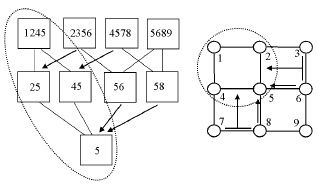TR2001-22
Understanding Belief Propagation and its Generalizations
-
- , "Understanding Belief Propagation and Its Generalizations" in Exploring Artificial Intelligence in the New Millennium, Lakemeyer, G. and Nebel, B., Eds., chapter 8, pp. 239-236, Morgan Kaufmann Publishers, January 2003.BibTeX TR2001-22 PDF
- @incollection{Yedidia2003jan1,
- author = {Yedidia, J.S. and Freeman, W.T. and Weiss, Y.},
- title = {{Understanding Belief Propagation and Its Generalizations}},
- booktitle = {Exploring Artificial Intelligence in the New Millennium},
- year = 2003,
- editor = {Lakemeyer, G. and Nebel, B.},
- chapter = 8,
- pages = {239--236},
- month = jan,
- publisher = {Morgan Kaufmann Publishers},
- isbn = {1-55860-811-7},
- url = {https://www.merl.com/publications/TR2001-22}
- }
- , "Understanding Belief Propagation and Its Generalizations" in Exploring Artificial Intelligence in the New Millennium, Lakemeyer, G. and Nebel, B., Eds., chapter 8, pp. 239-236, Morgan Kaufmann Publishers, January 2003.

Abstract:
"Inference" problems arise in statistical physics, computer vision, error-correcting coding theory, and AI. We explain the principles behind the belief propagation (BP) algorithm, which is an efficient way to solve inference problems based on passing local messages. We develop a unified approach with examples, notation, and graphical models borrowed from the relevant disciplines.We explain the close connection between the BP algorithm and the Bethe approximation of statistical physics. In particular, we show that BP can only converge to a fixed point that is also a stationary point of the Bethe approximation to the free energy. This result helps explain the successes of the BP algorithm and enables connections to be made with variational approaches to approximate inference.
Related News & Events
-
NEWS Exploring Artificial Intelligence in the New Millennium: publication by MERL researchers and others Date: January 31, 2003
Where: Exploring Artificial Intelligence in the New MillenniumBrief- The article "Understanding Belief Propagation and Its Generalizations" by Yedidia, J.S., Freeman, W.T. and Weiss, Y. was published in the book Exploring Artificial Intelligence in the New Millennium.